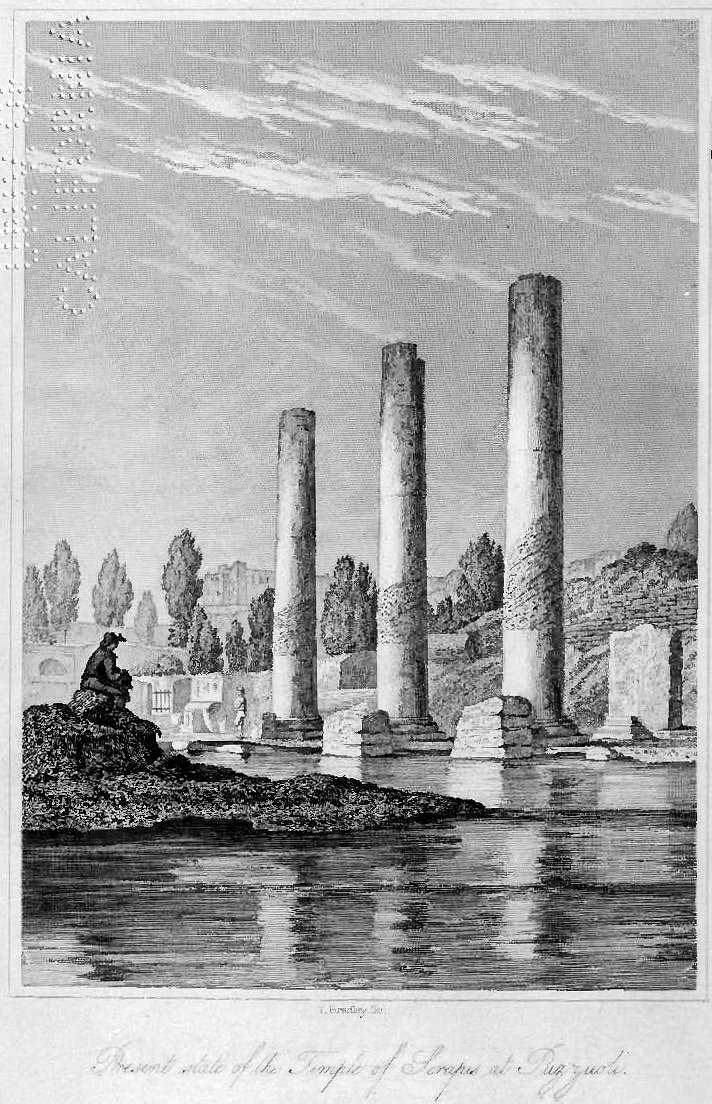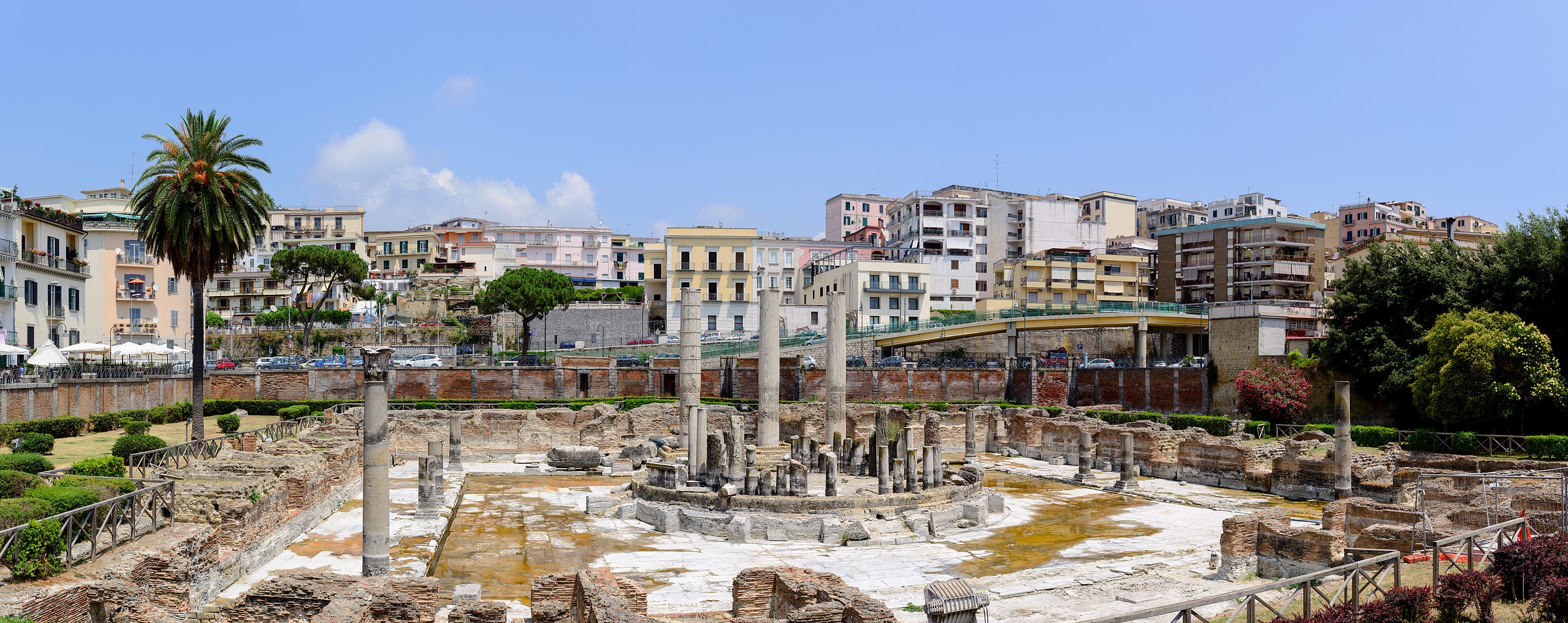The Temple of Jupiter Serapis at
Puzzuoli
Naples, Italy
The 2,000-year-old Roman
temple was built near the shore, partially submerged in the sea
after construction, and subsequently uplifted. The roughened area
in the middle of each column shows the effect of marine
rock-boring clams (Lithodomus): the dividing line and the smooth area at the bottom of
each column shows how far it was buried in sediment, and not
susceptible to clams. Charles Lyell used the image above as the
frontispiece for his Principles of Geology (1830) to demonstrate that ongoing
geological processes can have significant effects over long period
of time.
The panorama
below shows the marketplace in the early 21st century. The
banding patterns are still visible.


